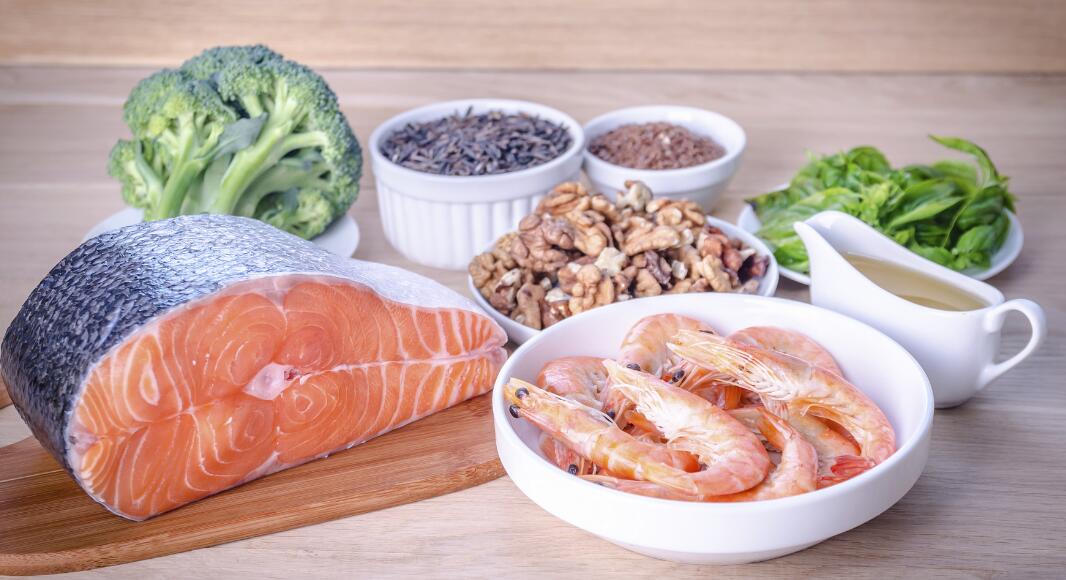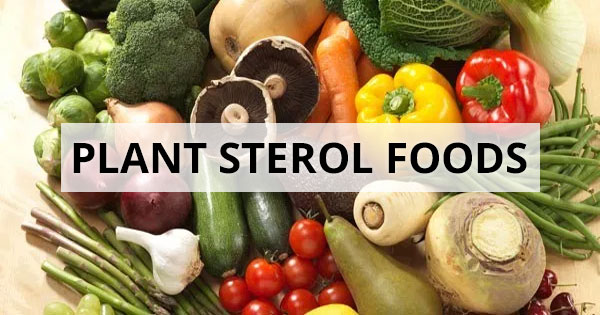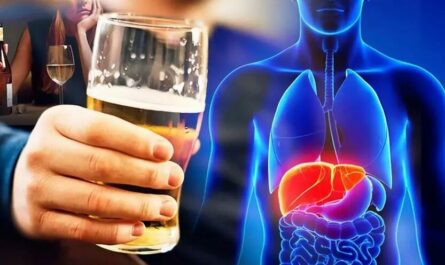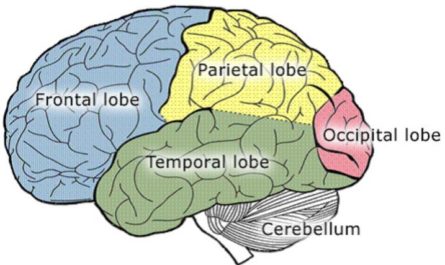High cholesterol is a growing concern for many people worldwide. It can lead to serious health problems, such as heart disease and stroke if left unchecked. While medication is often prescribed to manage cholesterol levels, many people are seeking natural alternatives to avoid potential side effects. In this article, we’ll discuss 14 effective remedies that can help you lower your cholesterol naturally without medicine.
Common Causes of High Cholesterol
First, let us explore some common causes of high cholesterol
- Poor diet: Consuming a diet high in saturated and trans fats, cholesterol, and processed foods can contribute to high cholesterol levels. These types of fats are commonly found in red meat, full-fat dairy products, fried foods, and baked goods.
- Sedentary lifestyle: Lack of physical activity can lead to weight gain and lower levels of high-density lipoprotein (HDL) cholesterol. It is considered “good” cholesterol that helps remove low-density lipoprotein (LDL) cholesterol from the arteries.
- Obesity: Being overweight or obese increases the production of LDL cholesterol and triglycerides while decreasing HDL cholesterol levels.
- Genetics: Some people have a genetic predisposition to high cholesterol levels, known as familial hypercholesterolemia.
- Age and gender: Cholesterol levels tend to increase with age, and men generally have higher cholesterol levels than pre-menopausal women. However, after menopause, women’s cholesterol levels tend to rise and may become similar to or higher than men’s levels.
- Smoking: Smoking damages blood vessels and lowers HDL cholesterol levels. This makes it easier for LDL cholesterol to build up in the arteries.
- Certain medical conditions: Conditions such as diabetes, kidney disease, hypothyroidism, and liver disease can contribute to high cholesterol levels.
- Medications: Certain medications, such as corticosteroids, diuretics, and some immunosuppressants, can increase LDL cholesterol levels.
- Alcohol consumption: Excessive alcohol consumption can raise LDL cholesterol levels.
- Stress: Chronic stress may affect cholesterol levels by increasing the production of LDL cholesterol and decreasing HDL cholesterol.

How to Lower Cholesterol Naturally Without Medicine
1. Embrace a Heart-Healthy Diet
The foundation of managing cholesterol lies in adopting a healthy diet. You should incorporate an abundance of fruits and vegetables into your meals. These plant-based powerhouses are low in calories and high in fiber, antioxidants, and phytochemicals. This can help reduce inflammation and protect your heart.
Whole grains are another essential component of a heart-healthy diet. Unlike refined grains, which have been stripped of their beneficial fiber and nutrients, whole grains retain their nutritional integrity. You can opt for whole-grain bread, pasta, rice, and cereals to increase your fiber intake.
When it comes to protein, choose lean sources like skinless poultry, fish, legumes, and low-fat dairy products. These options provide essential amino acids without the added saturated fat found in fatty meats.
2. Increase Your Fiber Intake
Fiber is a true hero when it comes to managing cholesterol. It comes in two forms: soluble and insoluble. While both types offer health benefits, soluble fiber is particularly effective in lowering cholesterol levels.
Soluble fiber works by binding to cholesterol in the digestive tract, preventing its absorption into the bloodstream. This means that instead of circulating in your body and potentially clogging your arteries.
To boost your soluble fiber intake, include plenty of oats, apples, citrus fruits, beans, and lentils in your diet. These foods are not only rich in fiber but also provide a host of other nutrients that support overall health.
Oats, in particular, are a standout choice for lowering cholesterol. They contain a type of soluble fiber called beta-glucan. It can significantly reduce LDL (bad) cholesterol levels.
3. Choose Healthy Fats
Fat is often vilified when it comes to heart health, but not all fats are created equal. While saturated and trans fats can indeed raise cholesterol levels and increase the risk of heart disease.
Healthy fats like monounsaturated and polyunsaturated fats can help lower LDL (bad) cholesterol and improve overall cholesterol profiles.
Monounsaturated fats, found in avocados, nuts, seeds, and olive oil, have been shown to reduce LDL cholesterol while maintaining HDL (good) cholesterol levels. These fats also help improve insulin sensitivity and reduce inflammation, further supporting heart health.
Polyunsaturated fats, specifically omega-3 fatty acids, are another type of healthy fat that can benefit cholesterol levels. Omega-3s, found in fatty fish like salmon, mackerel, and sardines, can lower triglycerides and reduce inflammation in the body.
If you don’t regularly consume fish, consider taking a high-quality fish oil supplement to obtain the benefits of omega-3s.
4. Limit Saturated and Trans Fats
Just as choosing healthy fats is important for managing cholesterol, limiting unhealthy fats is equally crucial. Saturated and trans fats are the main culprits when it comes to raising LDL (bad) cholesterol levels.
Saturated fats are primarily found in animal products, such as fatty meats, full-fat dairy products, and tropical oils like coconut and palm oil. While some sources of saturated fat have gained popularity in recent years, it’s still important to consume them in moderation.
Trans fats, on the other hand, are a type of unsaturated fat that has been chemically altered to increase their shelf life and stability. They are often found in processed foods, fried items, and baked goods. Trans fats not only raise LDL cholesterol but also lower HDL (good) cholesterol. This makes them particularly harmful to heart health.
To minimize your intake of saturated and trans fats, read food labels carefully and opt for lower-fat alternatives when possible. Choose lean cuts of meat, skinless poultry, and low-fat or non-fat dairy products.
When cooking, try to use heart-healthy oils like olive, avocado, or canola oil instead of butter or lard.

5. Incorporate Plant Sterols and Stanols
Plant sterols and stanols are natural compounds found in small amounts in fruits, vegetables, nuts, and seeds. They have a structure similar to cholesterol.
This allows them to compete with cholesterol for absorption in the intestines. Blocking cholesterol absorption, plant sterols, and stanols can effectively lower LDL cholesterol levels.
While plant sterols and stanols are naturally present in plant-based foods, the amounts are often too low to have a significant impact on cholesterol levels.
However, many food manufacturers now fortify products like spreads, yogurts, and juices with added plant sterols or stanols. So it is easier to obtain the recommended daily intake.
When choosing fortified foods, look for products that provide at least 0.4 grams of plant sterols or stanols per serving. Consuming 1.5 to 3 grams of plant sterols or stanols per day can reduce LDL cholesterol by an average of 10% to 14%.
6. Get Moving with Regular Exercise
Exercise is a powerful tool in the fight against high cholesterol. Regular physical activity not only helps raise HDL (good) cholesterol levels but also lowers LDL (bad) cholesterol. It’s a win-win for your heart health!
Aim for at least 150 minutes of moderate-intensity exercise or 75 minutes of vigorous-intensity exercise per week. You can try moderate-intensity activities including brisk walking, cycling, dancing, and swimming. Some vigorous-intensity activities include jogging, hiking, and playing sports like basketball or soccer.
If you’re new to exercise or have been sedentary for a while, start slowly and gradually increase the duration and intensity of your workouts. Even short bouts of activity, like taking a 10-minute walk during your lunch break, can improve cholesterol levels.
In addition to aerobic exercise, incorporate strength training exercises into your routine at least twice a week. Strength training helps build lean muscle mass, which can boost your metabolism and further support healthy cholesterol levels.
7. Maintain a Healthy Weight
Carrying excess weight, especially around the waist, can contribute to higher cholesterol levels. Excess body fat can lead to insulin resistance, which can cause the liver to produce more cholesterol and triglycerides.
By achieving and maintaining a healthy weight through a balanced diet and regular exercise, you can significantly improve your cholesterol profile. Even a modest weight loss of 5% to 10% of your body weight can make a noticeable difference in your cholesterol levels.
To determine if you’re at a healthy weight, calculate your body mass index (BMI) and measure your waist circumference. A BMI between 18.5 and 24.9 is considered healthy.

8. Quit Smoking
Smoking is a significant risk factor for heart disease, and it also negatively impacts cholesterol levels. The chemicals in cigarette smoke can lower HDL (good) cholesterol and make LDL (bad) cholesterol more prone to oxidation.
Quitting smoking is one of the best things you can do for your heart health and overall well-being. Within just a few weeks of quitting, your HDL cholesterol levels can start to rise.
If you’re a smoker, there are many resources available to help you quit. Nicotine replacement therapy, prescription medications, and support groups can all increase your chances of success.
9. Manage Stress
Chronic stress can indirectly affect your cholesterol levels. When you’re stressed, your body releases hormones like cortisol and adrenaline, which can contribute to the buildup of plaque in the arteries.
To manage stress and support healthy cholesterol levels, find healthy ways to cope with stress. Deep breathing exercises, meditation, yoga, and engaging in hobbies you enjoy can all help reduce stress and promote relaxation.
Regular exercise is also an excellent stress-buster. Physical activity releases endorphins, the body’s natural mood boosters. This can help reduce stress and improve overall well-being.
10. Limit Alcohol Consumption
While moderate alcohol consumption has been associated with some heart-protective benefits, excessive drinking can have the opposite effect. Heavy alcohol use can raise triglyceride levels and increase the risk of heart disease.
If you choose to drink alcohol, do so in moderation. Moderate alcohol consumption is defined as up to one drink per day for women and up to two drinks per day for men. One drink equals 12 ounces of beer, 5 ounces of wine, or 1.5 ounces of distilled spirits.
11. Incorporate Omega-3 Fatty Acids
Omega-3 fatty acids are a type of polyunsaturated fat that has numerous health benefits, including improving cholesterol levels. The two main types of omega-3s are eicosapentaenoic acid (EPA) and docosahexaenoic acid (DHA). They are found primarily in fatty fish like salmon, mackerel, and sardines.
Omega-3s work by lowering triglyceride levels and reducing inflammation in the body. They may also help raise HDL (good) cholesterol levels and improve the function of the endothelium.
To obtain the benefits of omega-3s, aim to consume fatty fish at least twice a week. If you don’t regularly eat fish or have a seafood allergy, consider taking a high-quality fish oil supplement. Look for a supplement that provides at least 1,000 milligrams of combined EPA and DHA per serving.
If you follow a vegetarian or vegan diet, you can obtain omega-3s from plant-based sources like flaxseeds, chia seeds, and walnuts.
12. Explore Cholesterol-Lowering Supplements
In addition to making dietary and lifestyle changes, certain supplements may help support healthy cholesterol levels. While supplements should not be used as a substitute for a balanced diet and regular exercise, they can be a useful addition to your cholesterol-lowering regimen.
One promising supplement is niacin, also known as vitamin B3. Niacin has been shown to raise HDL (good) cholesterol and lower LDL (bad) cholesterol and triglycerides. However, high doses of niacin can cause side effects like flushing, itching, and stomach upset, so it’s important to work with your healthcare provider.
As with any supplement, it’s essential to do your research and choose high-quality products from reputable manufacturers. Look for supplements that have been third-party tested for purity and potency. Always consult with your healthcare provider before starting any new supplement regimen.

13. Get Adequate Sleep
Getting enough quality sleep plays a role in cholesterol management. Studies have shown that lack of sleep or poor sleep quality can negatively impact cholesterol levels.
Sleep deprivation has been linked to higher levels of LDL (bad) cholesterol and lower levels of HDL (good) cholesterol. It can also increase inflammation in the body, which can contribute to the development of heart disease.
To support healthy cholesterol levels and overall health, aim for 7-9 hours of sleep per night. Establish a consistent sleep routine by going to bed and waking up at the same time each day, even on weekends.
Create a sleep-conducive environment by keeping your bedroom cool, dark, and quiet, and avoid electronic devices for at least an hour before bedtime.
14. Partner with Your Healthcare Provider
While making lifestyle changes can significantly impact cholesterol levels, it’s important to work closely with your healthcare provider to monitor your progress. Regular check-ups and blood tests can help you and your doctor track your cholesterol levels and make adjustments to your treatment plan.
It’s also important to discuss any family history of high cholesterol or heart disease with your healthcare provider. Some people may have a genetic predisposition to high cholesterol, which can require more aggressive treatment.
Conclusion
By incorporating these remedies into your daily life, you can improve your cholesterol levels and overall heart health. Remember, small changes can add up to big results over time. Start by making one or two changes, like increasing your fiber intake or adding more physical activity, and gradually build from there.






